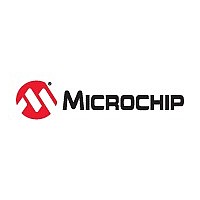PIC18F4550-I/P Microchip Technology Inc., PIC18F4550-I/P Datasheet - Page 168

PIC18F4550-I/P
Manufacturer Part Number
PIC18F4550-I/P
Description
40 PIN, 32 KB FLASH, 2048 RAM, FS-USB 2.0
Manufacturer
Microchip Technology Inc.
Datasheet
1.PIC18F4550-IP.pdf
(430 pages)
Specifications of PIC18F4550-I/P
A/d Inputs
13-Channel, 10-Bit
Comparators
2
Cpu Speed
12 MIPS
Eeprom Memory
256 Bytes
Input Output
34
Interface
I2C/SPI/UART/USART/USB
Memory Type
Flash
Number Of Bits
8
Package Type
40-pin PDIP
Programmable Memory
32K Bytes
Ram Size
2K Bytes
Speed
48 MHz
Timers
1-8-bit, 3-16-bit
Voltage, Range
2-5.5 V
Lead Free Status / Rohs Status
RoHS Compliant part
Electrostatic Device
Available stocks
Company
Part Number
Manufacturer
Quantity
Price
Company:
Part Number:
PIC18F4550-I/PT
Manufacturer:
MURATA
Quantity:
12 000
Company:
Part Number:
PIC18F4550-I/PT
Manufacturer:
Microchip Technology
Quantity:
36 332
Company:
Part Number:
PIC18F4550-I/PT
Manufacturer:
Microchip Technology
Quantity:
10 000
Part Number:
PIC18F4550-I/PT
Manufacturer:
MICROCHIP/微芯
Quantity:
20 000
- Current page: 168 of 430
- Download datasheet (8Mb)
PIC18F2455/2550/4455/4550
REGISTER 17-2:
There are 6 signals from the module to communicate
with and control an external transceiver:
• VM: Input from the single-ended D- line
• VP: Input from the single-ended D+ line
• RCV: Input from the differential receiver
• VMO: Output to the differential line driver
• VPO: Output to the differential line driver
• UOE: Output enable
DS39632C-page 166
bit 7
Legend:
R = Readable bit
-n = Value at POR
bit 7
bit 6
bit 5
bit 4
bit 3
bit 2
bit 1-0
Note 1:
UTEYE
R/W-0
2:
3:
If UTRDIS is set, the UOE signal will be active independent of the UOEMON bit setting.
The UPUEN, UTRDIS and FSEN bits should never be changed while the USB module is enabled. These
values must be preconfigured prior to enabling the module.
This bit is only valid when the on-chip transceiver is active (UTRDIS = 0); otherwise, it is ignored.
UTEYE: USB Eye Pattern Test Enable bit
1 = Eye pattern test enabled
0 = Eye pattern test disabled
UOEMON: USB OE Monitor Enable bit
1 = UOE signal active; it indicates intervals during which the D+/D- lines are driving
0 = UOE signal inactive
Unimplemented: Read as ‘0’
UPUEN: USB On-Chip Pull-up Enable bit
1 = On-chip pull-up enabled (pull-up on D+ with FSEN = 1 or D- with FSEN = 0)
0 = On-chip pull-up disabled
UTRDIS: On-Chip Transceiver Disable bit
1 = On-chip transceiver disabled; digital transceiver interface enabled
0 = On-chip transceiver active
FSEN: Full-Speed Enable bit
1 = Full-speed device: controls transceiver edge rates; requires input clock at 48 MHz
0 = Low-speed device: controls transceiver edge rates; requires input clock at 6 MHz
PPB1:PPB0: Ping-Pong Buffers Configuration bits
11 = Even/Odd ping-pong buffers enabled for Endpoints 1 to 15
10 = Even/Odd ping-pong buffers enabled for all endpoints
01 = Even/Odd ping-pong buffer enabled for OUT Endpoint 0
00 = Even/Odd ping-pong buffers disabled
UOEMON
R/W-0
UCFG: USB CONFIGURATION REGISTER
(1)
W = Writable bit
‘1’ = Bit is set
U-0
—
(2)
UPUEN
R/W-0
Preliminary
(2,3)
(1)
(2,3)
(2)
U = Unimplemented bit, read as ‘0’
‘0’ = Bit is cleared
UTRDIS
R/W-0
The VPO and VMO signals are outputs from the SIE to
the external transceiver. The RCV signal is the output
from the external transceiver to the SIE; it represents
the differential signals from the serial bus translated
into a single pulse train. The VM and VP signals are
used to report conditions on the serial bus to the SIE
that can’t be captured with the RCV signal. The
combinations of states of these signals and their
interpretation are listed in Table 17-1 and Table 17-2.
(2)
FSEN
R/W-0
(2)
© 2006 Microchip Technology Inc.
x = Bit is unknown
R/W-0
PPB1
R/W-0
PPB0
bit 0
Related parts for PIC18F4550-I/P
Image
Part Number
Description
Manufacturer
Datasheet
Request
R

Part Number:
Description:
20-Pin USB Flash Microcontrollers
Manufacturer:
MICROCHIP [Microchip Technology]
Datasheet:

Part Number:
Description:
PIC18F With 128-segment LCD Driver And 12-bit ADC, 8KB Flash, 768B RAM, CCP, MSS
Manufacturer:
Microchip Technology
Datasheet:

Part Number:
Description:
PIC18F With 128-segment LCD Driver And 12-bit ADC, 16KB Flash, 768B RAM, CCP, MS
Manufacturer:
Microchip Technology
Datasheet:

Part Number:
Description:
PIC18F With 192-segment LCD Driver And 12-bit ADC, 8KB Flash, 768B RAM, CCP, MSS
Manufacturer:
Microchip Technology
Datasheet:

Part Number:
Description:
PIC18F With 192-segment LCD Driver And 12-bit ADC, 16KB Flash, 768B RAM, CCP, MS
Manufacturer:
Microchip Technology
Datasheet:

Part Number:
Description:
Microcontrollers (MCU) 48KB 3328 RAM 52 I/O
Manufacturer:
Microchip Technology
Datasheet:

Part Number:
Description:
Microcontrollers (MCU) 64KB 3328 RAM 52 I/O
Manufacturer:
Microchip Technology
Datasheet:

Part Number:
Description:
32kB Flash, 2kB RAM, 1kB EE, NanoWatt XLP, LCD 64 QFN 9x9x0.9mm T/R
Manufacturer:
Microchip Technology
Datasheet:

Part Number:
Description:
32kB Flash, 2kB RAM, 1kB EE, NanoWatt XLP, LCD 64 TQFP 10x10x1mm T/R
Manufacturer:
Microchip Technology
Datasheet:

Part Number:
Description:
128kB Flash, 4kB RAM, 1kB EE, 16MIPS, NanoWatt XLP, LCD, 5V 80 TQFP 12x12x1mm T/
Manufacturer:
Microchip Technology
Datasheet:

Part Number:
Description:
32kB Flash, 2kB RAM, 1kB EE, NanoWatt XLP, LCD 64 QFN 9x9x0.9mm TUBE
Manufacturer:
Microchip Technology
Datasheet:

Part Number:
Description:
32kB Flash, 2kB RAM, 1kB EE, NanoWatt XLP, LCD 64 TQFP 10x10x1mm TRAY
Manufacturer:
Microchip Technology

Part Number:
Description:
128kB Flash, 4kB RAM, 1kB EE, 16MIPS, NanoWatt XLP, LCD, 5V 80 TQFP 12x12x1mm TR
Manufacturer:
Microchip Technology












